Main installation, wood
Elevation, 96" x 96"
Plan, 96" x 96"
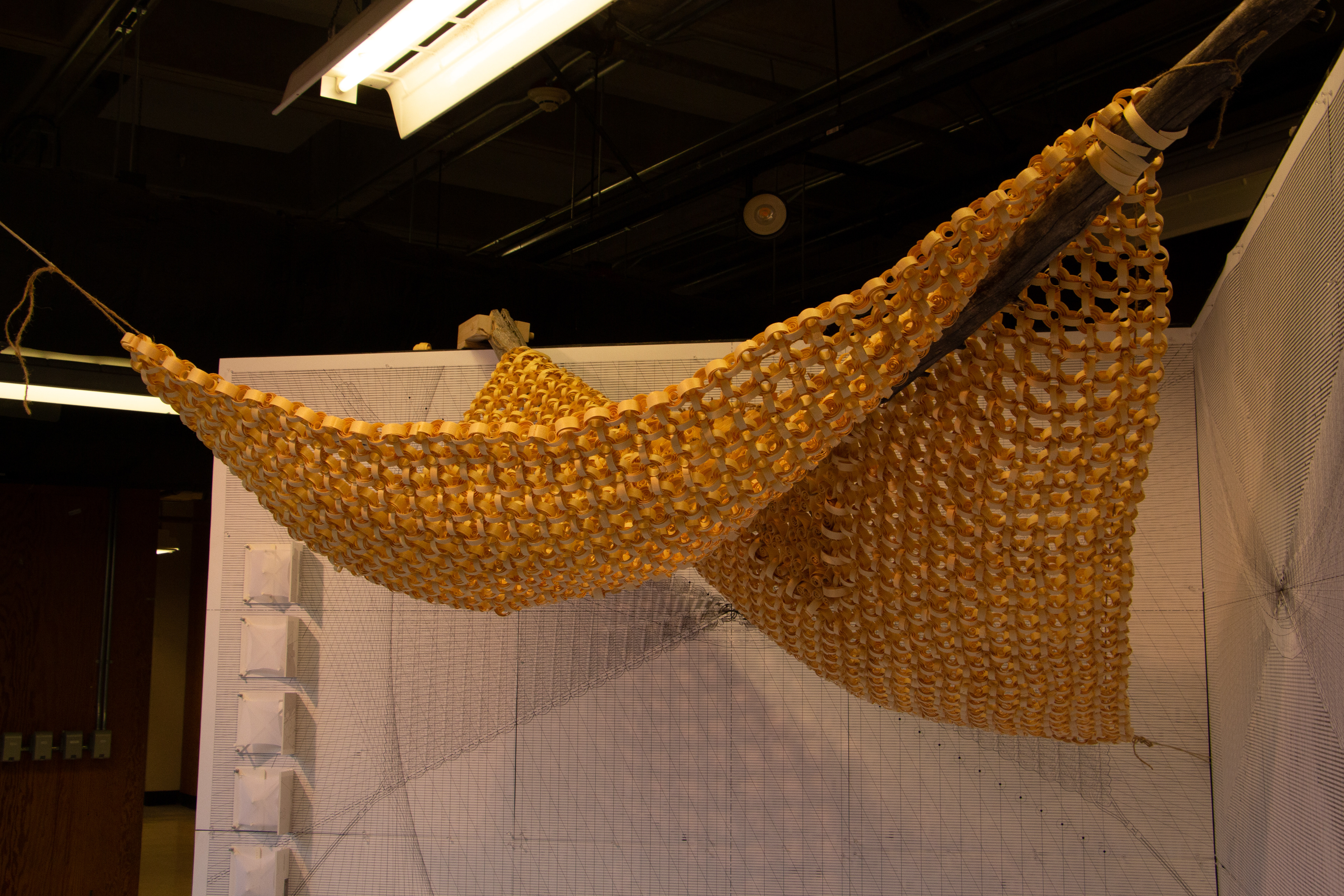

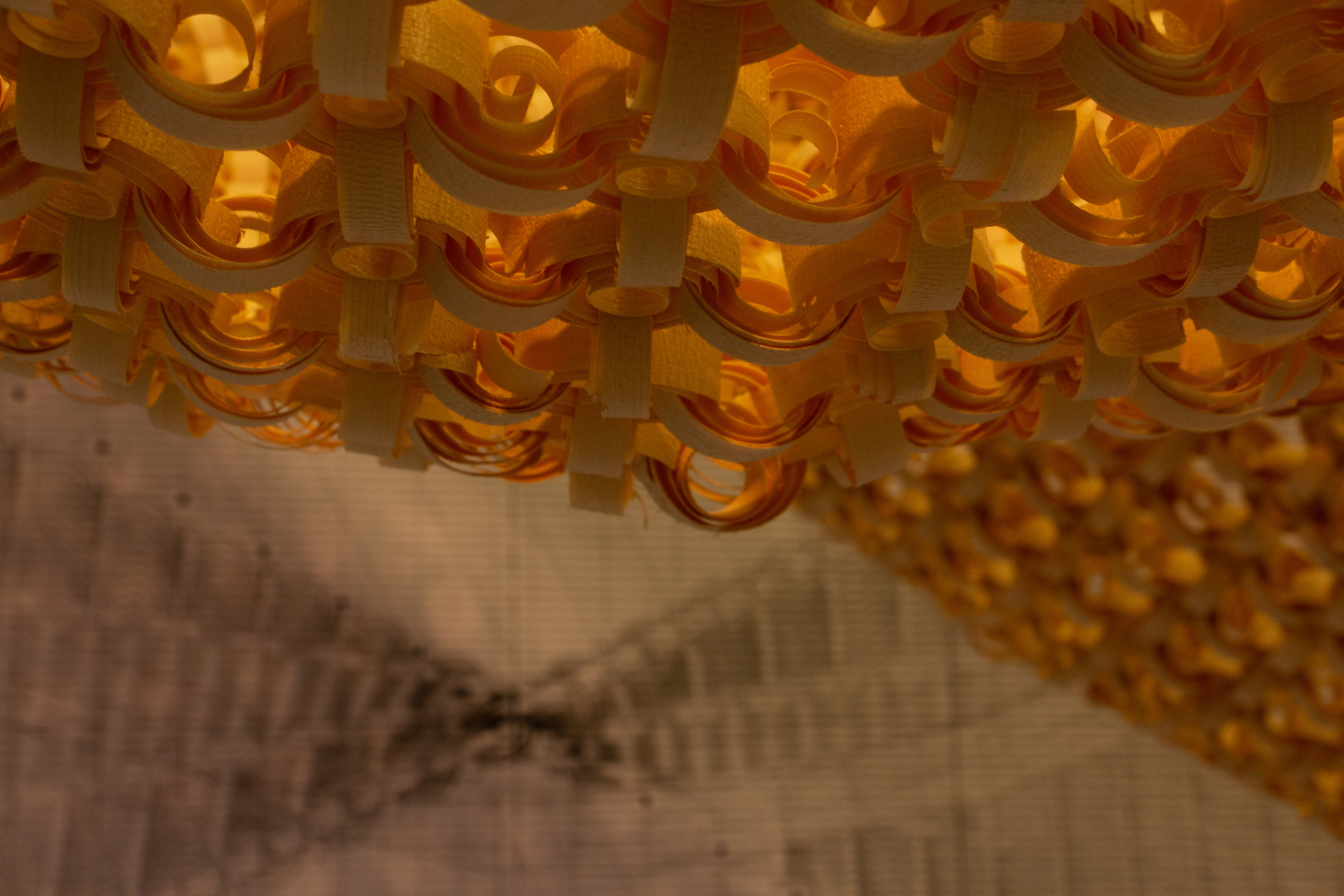
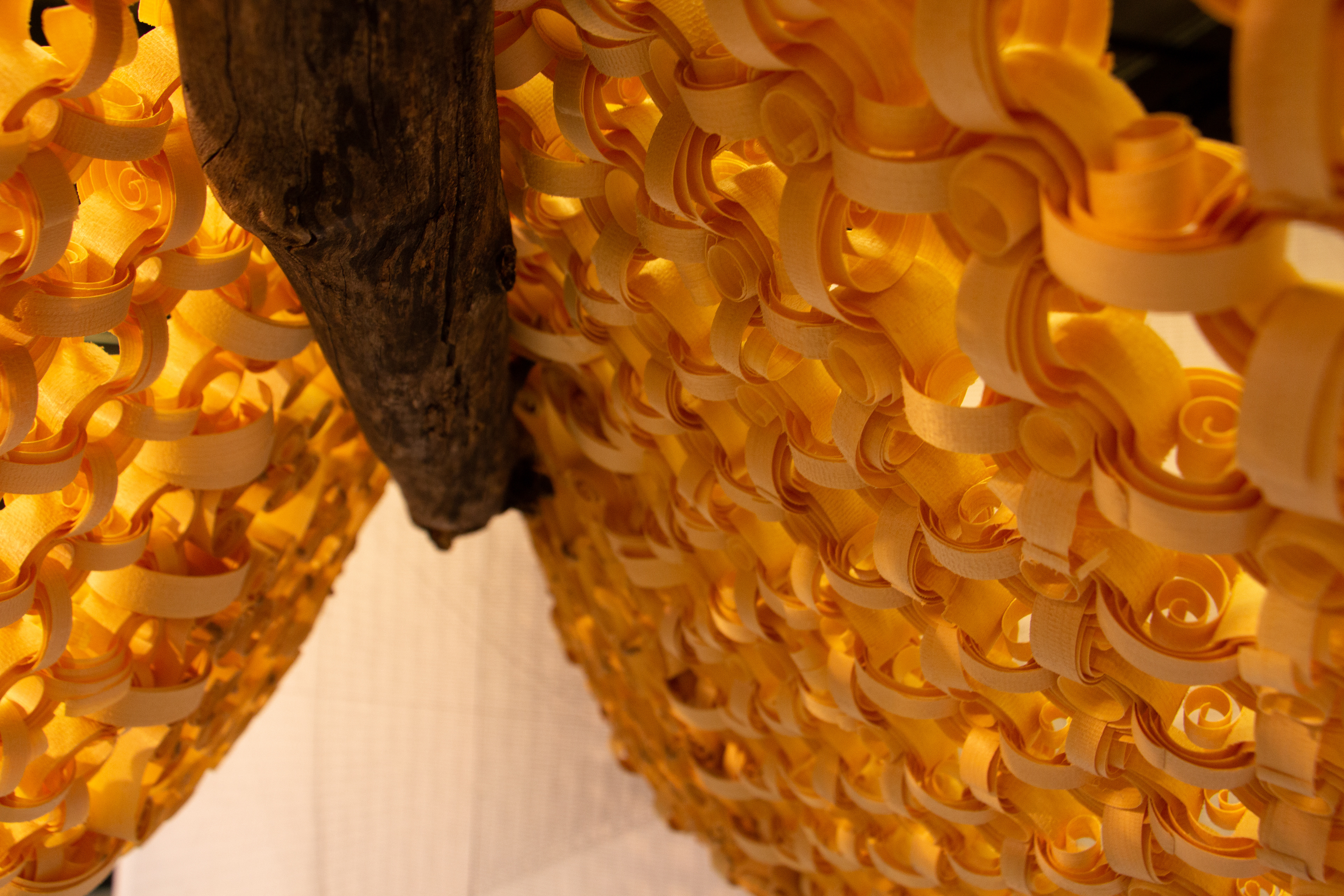
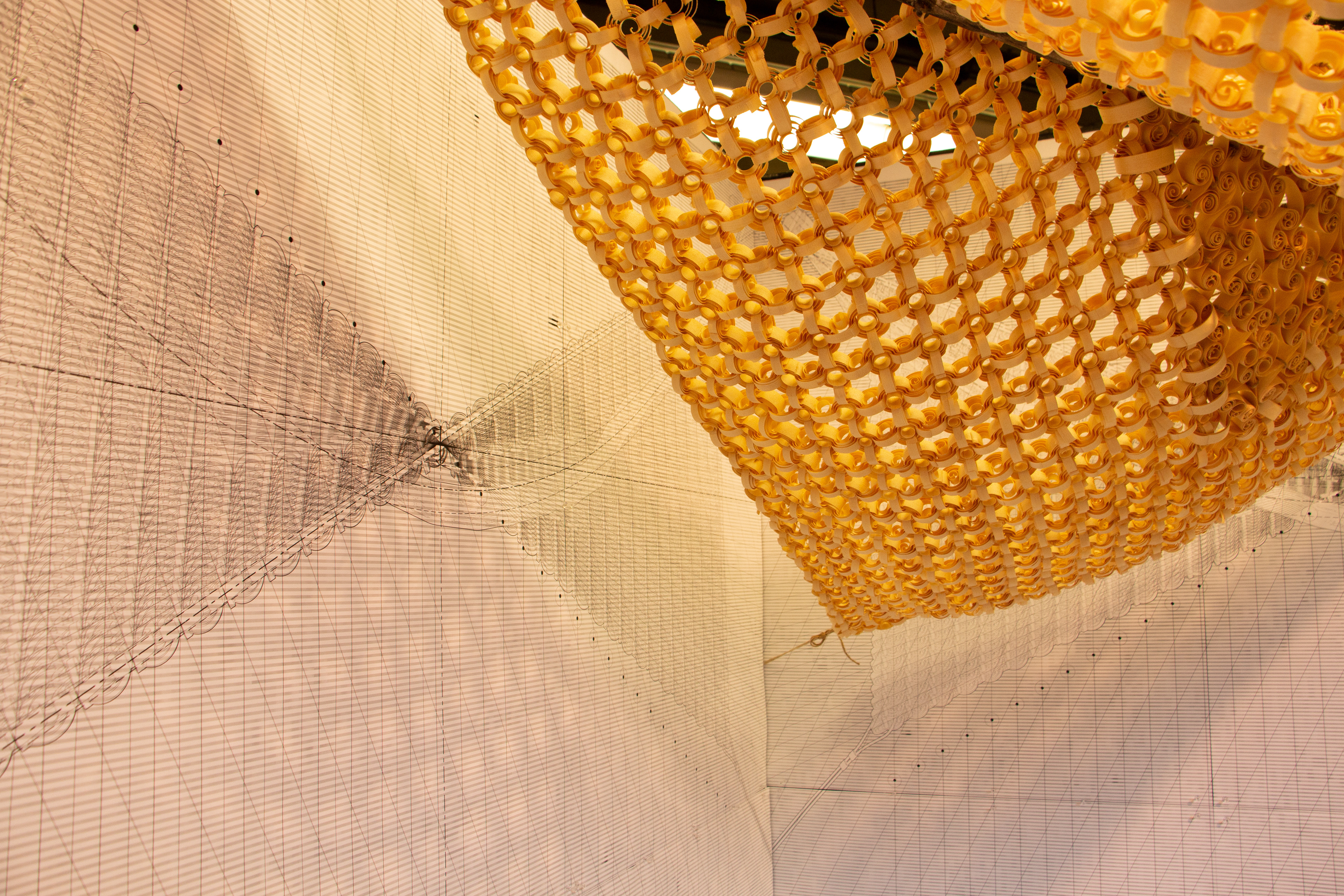
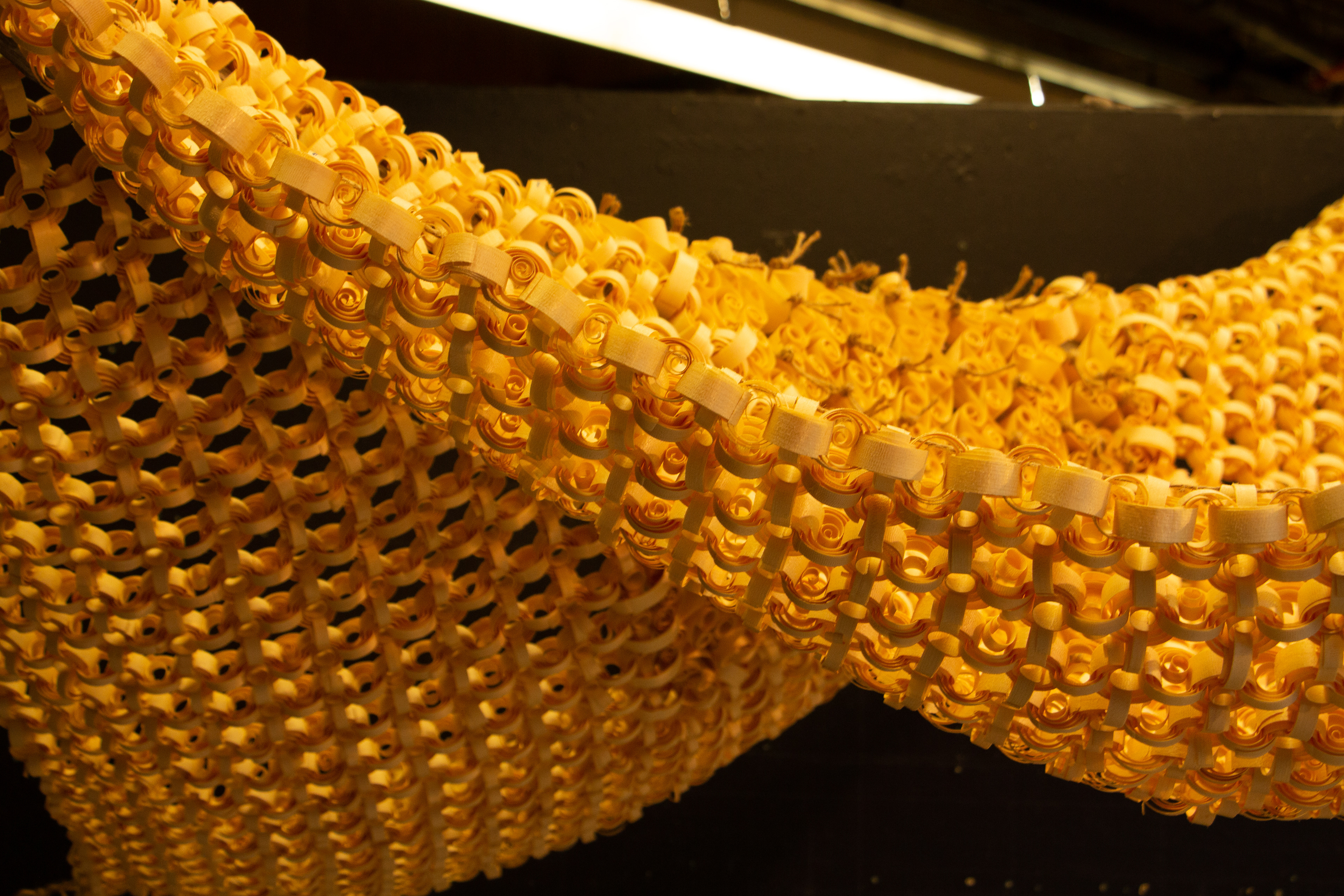
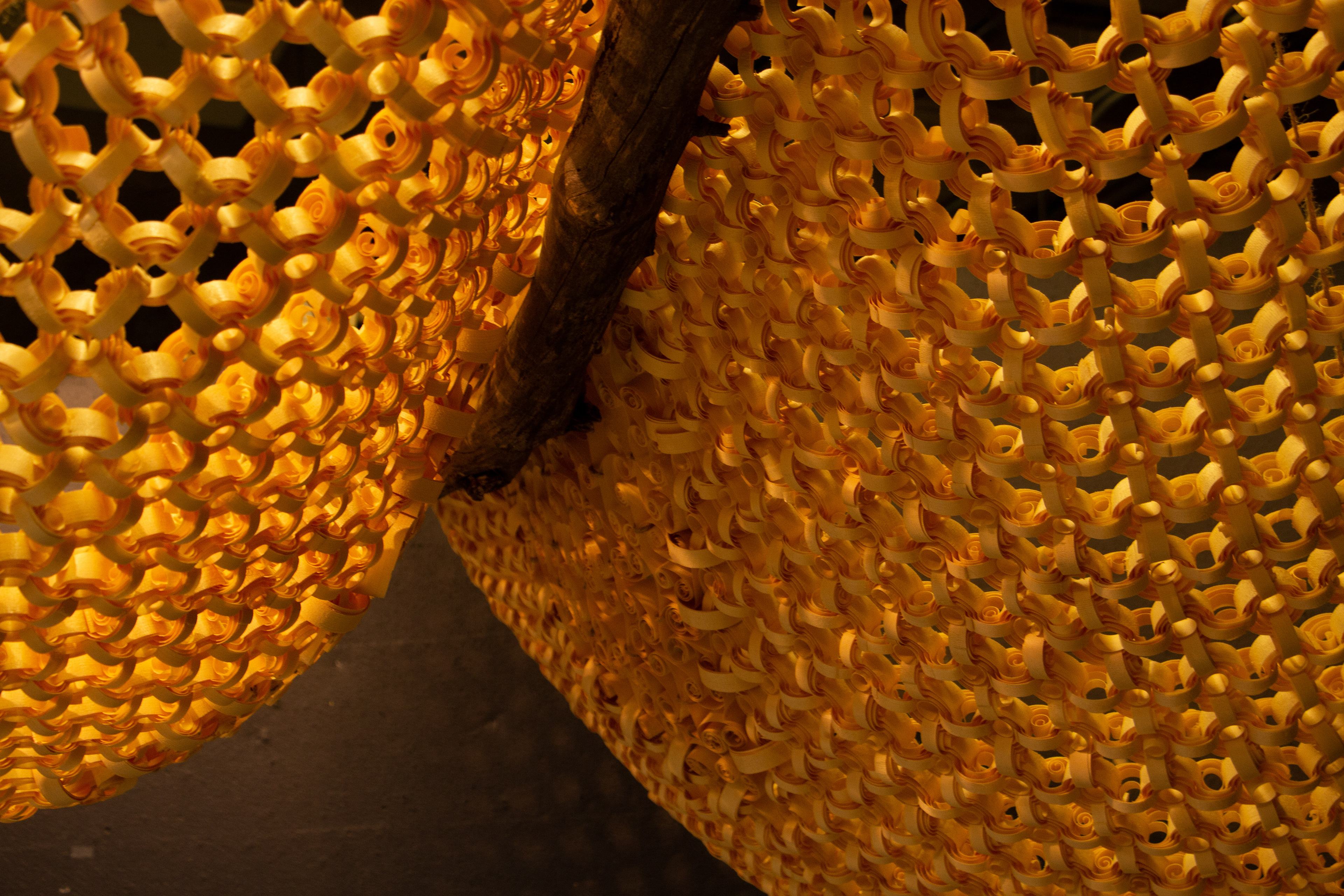
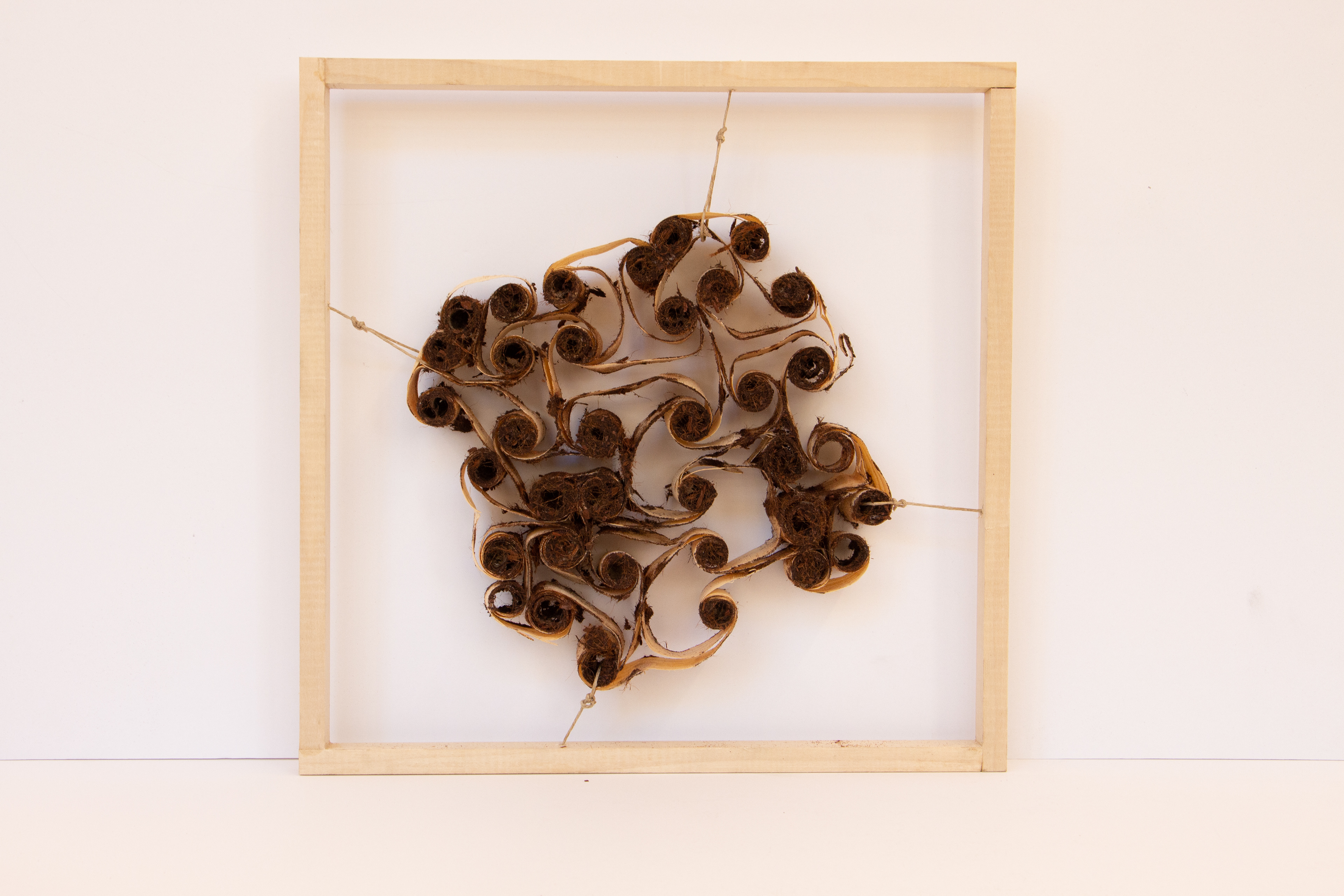
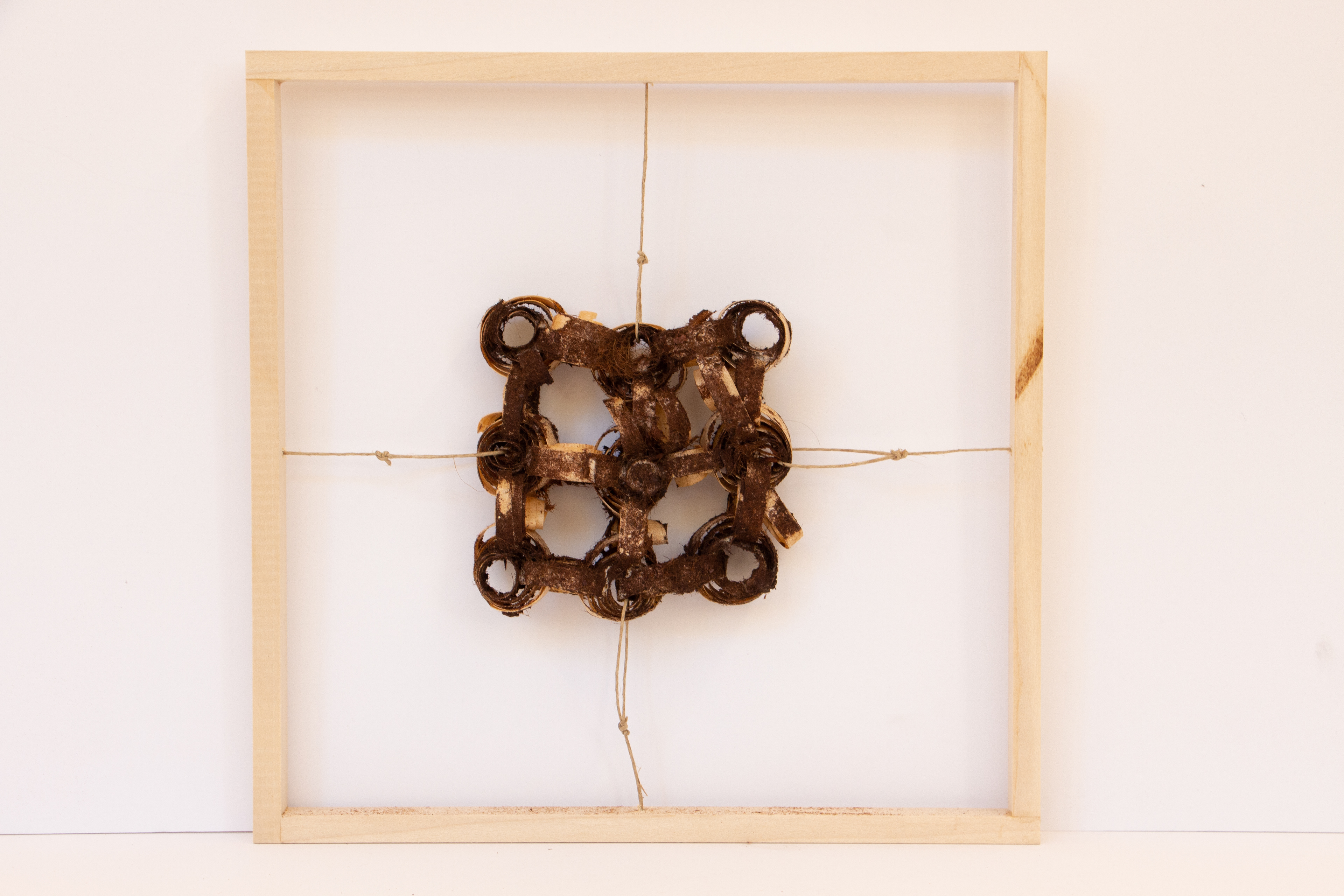
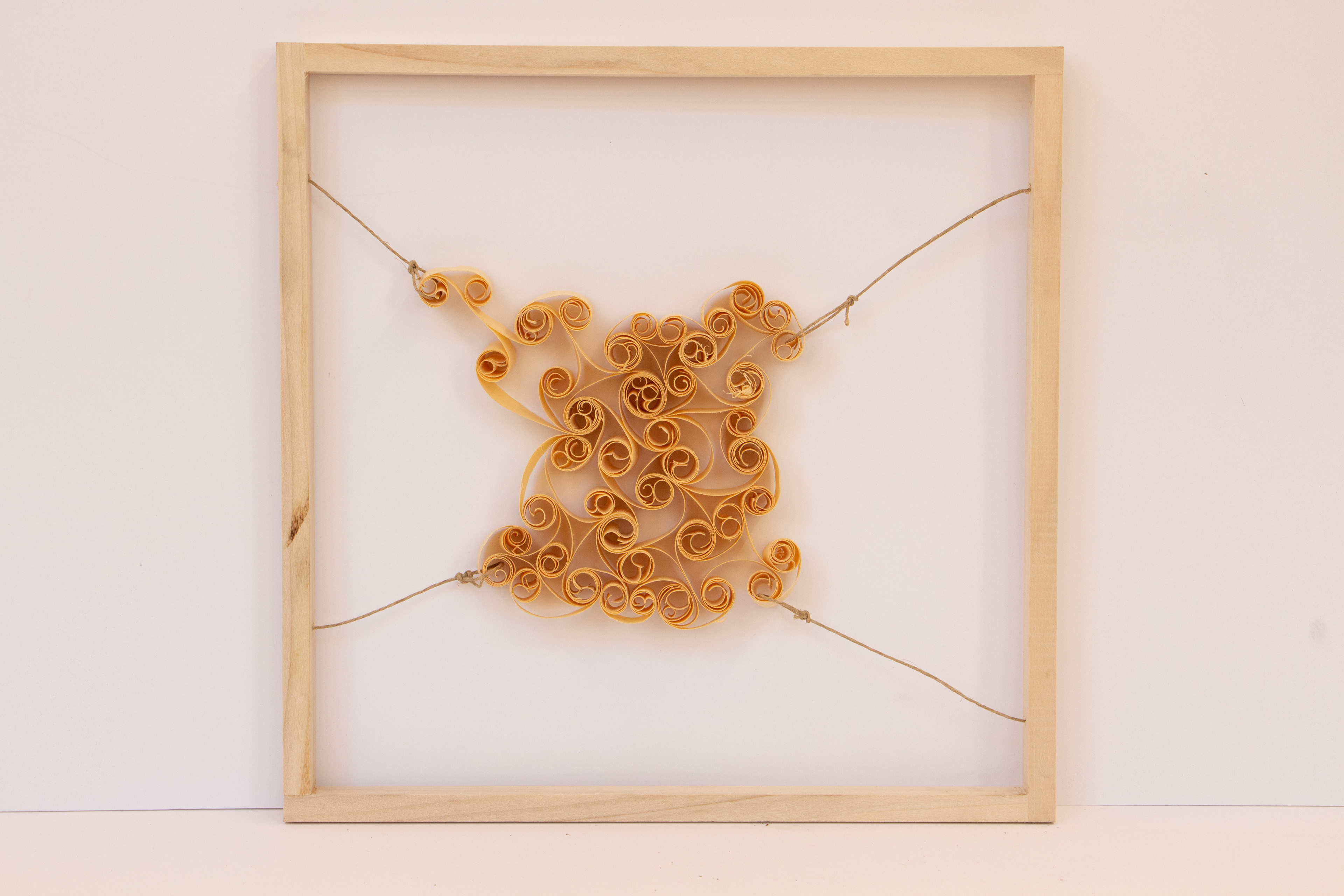
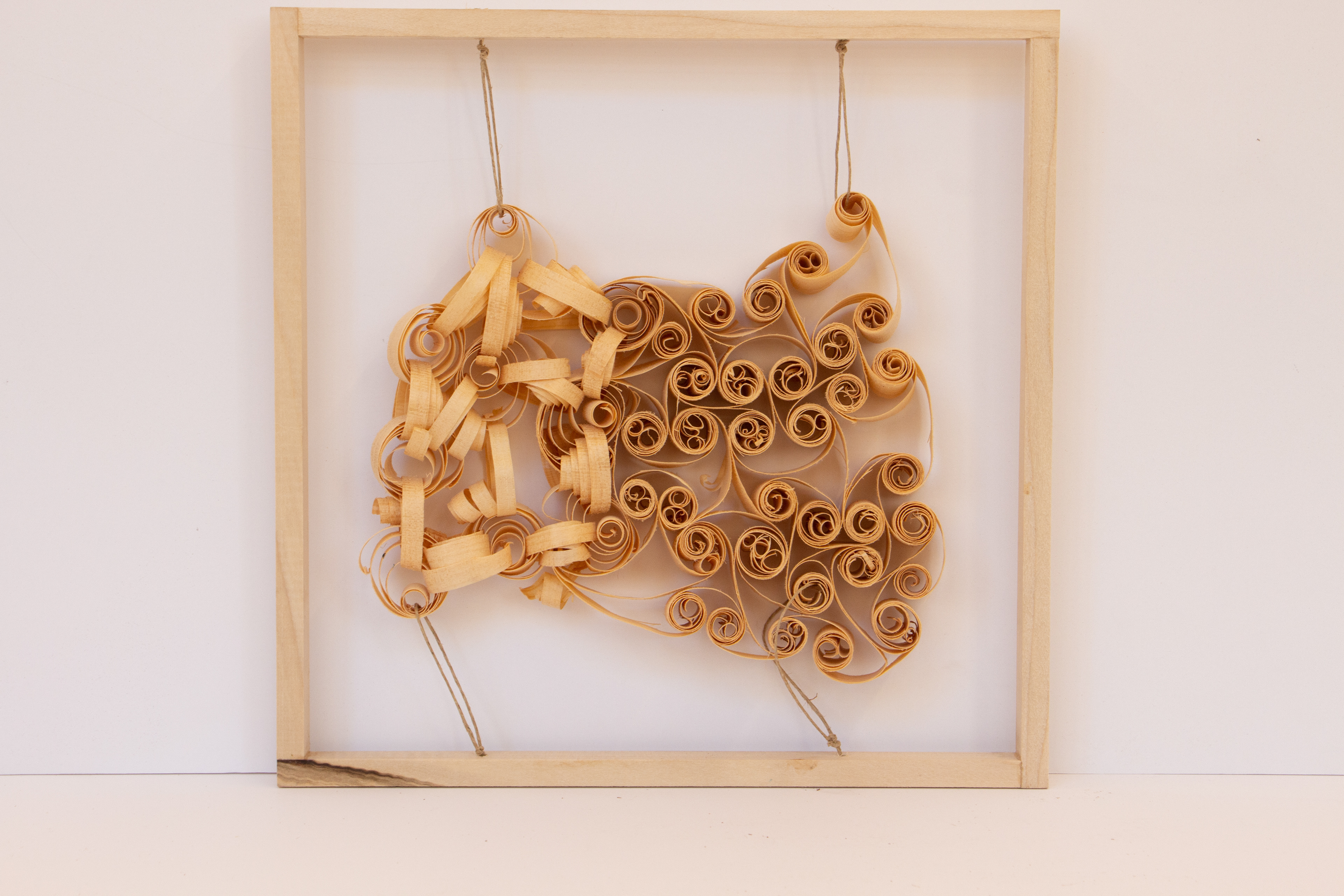
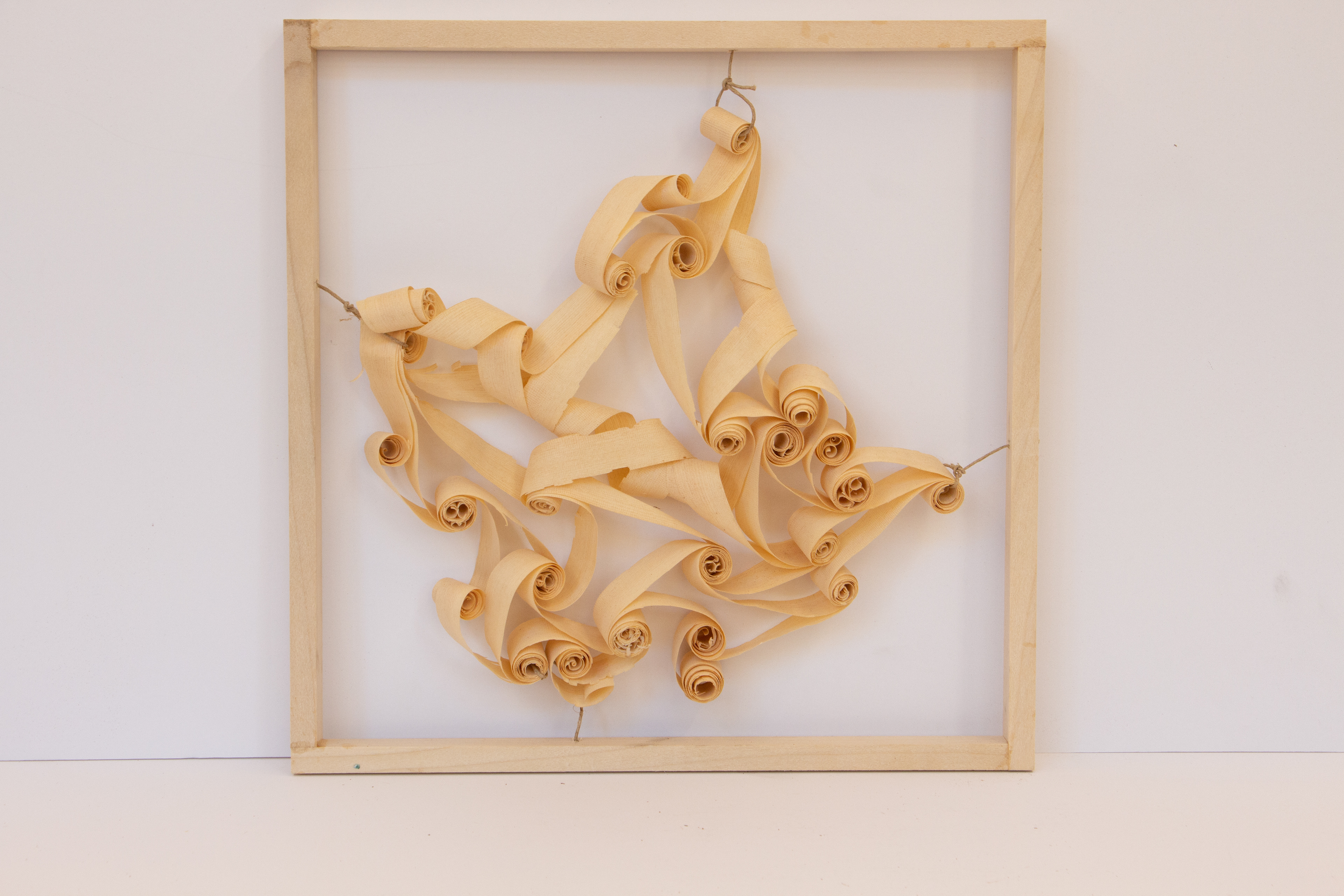
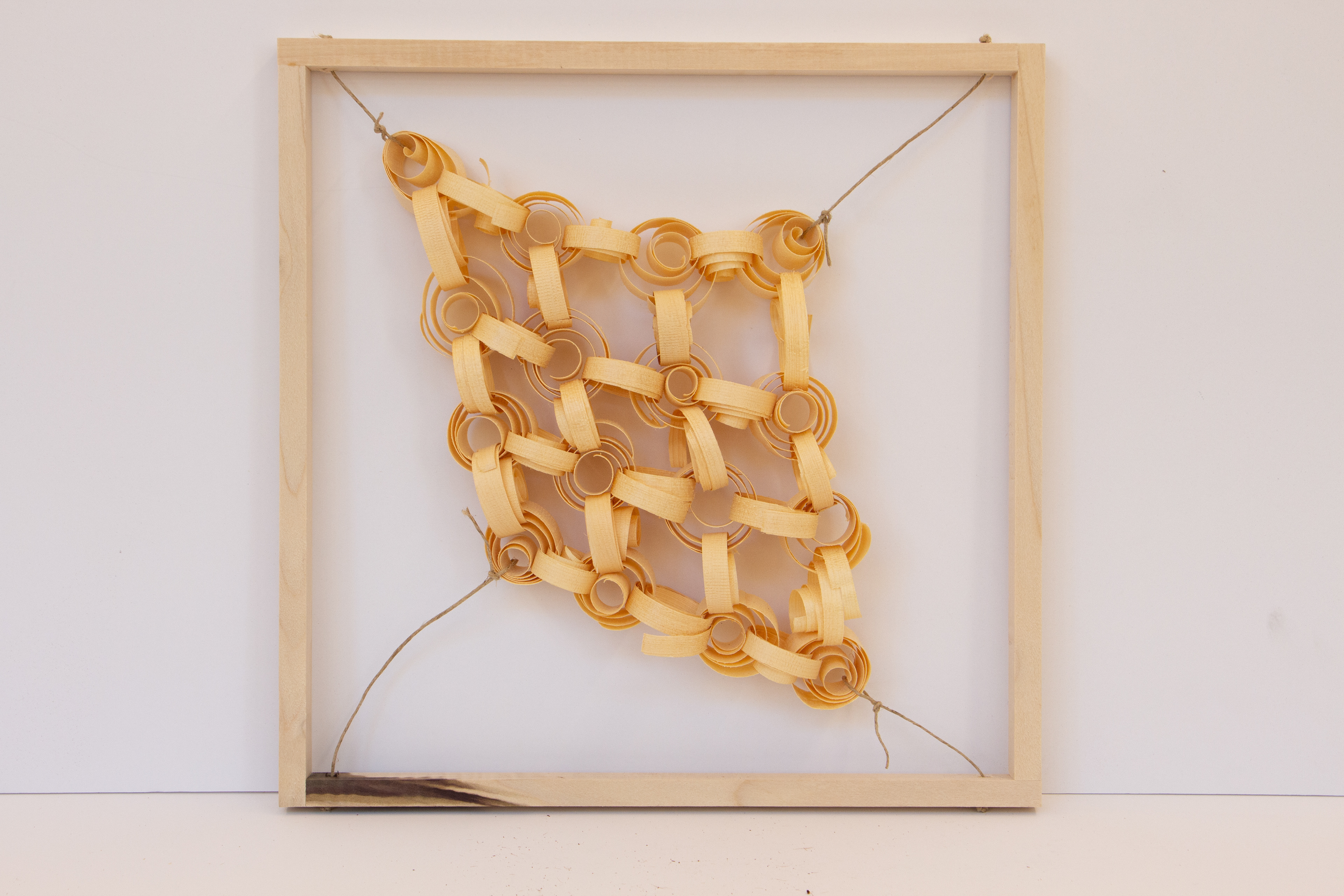
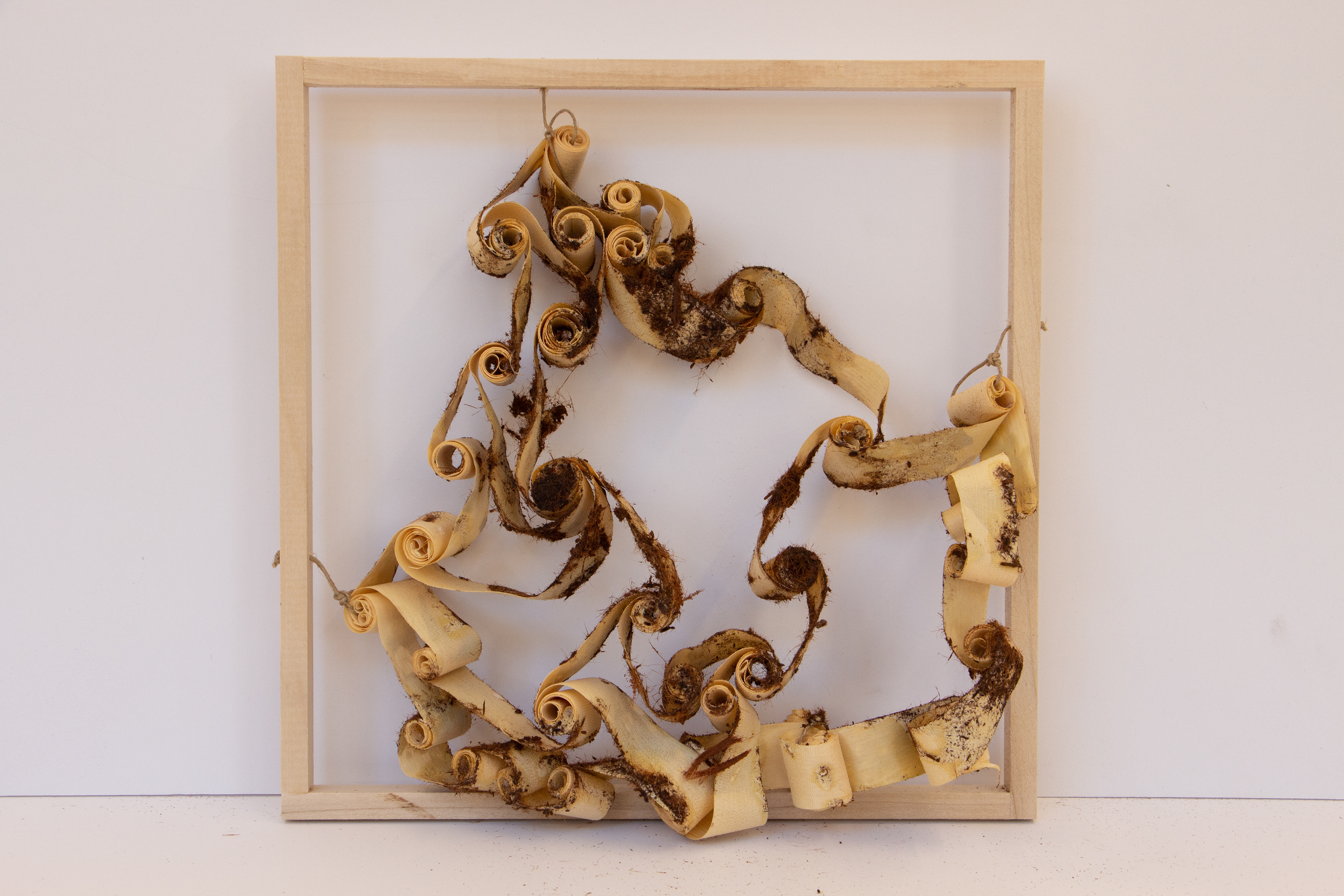
The lumber industry as presently constituted has a number of points in its process at which material is wasted. In the harvesting of the trees, curved timber is waste. After harvesting, the bark is removed from the tree and used for landscaping if anything. And the act of sawing lumber to create boards or other products is inherently inefficient, reducing a significant portion of wood volume to sawdust. This project interrogates each of these points in order to determine an alternate use for the waste product or an alternate process resulting in less waste, and how these redefined products/processes can be integrated into an architectural system. The system proposed is characterized by a tension-based wood membrane structure, fabricated from the strips of wood which result from planing lumber instead of sawing it (similar to veneer), a rigid skeleton made of whole curved timber, and a rigidizing and protective layer of ground bark. This system seeks to fill a role of temporary or pseudo-temporary structures, while after its life as part of a “building,” the transient membrane can be recycled to other uses such as erosion protection, wildlife habitats, or paper pulping. Developed in collaboration with Shenzhou Dai, ZiXiong Lin, and Rayna Zhang. Advised by Maria Paz Gutierrez, 2022.
Main installation, wood
Elevation, 96" x 96"
Plan, 96" x 96"













